










TRADE & SUPPLIER INDUCTION




















































































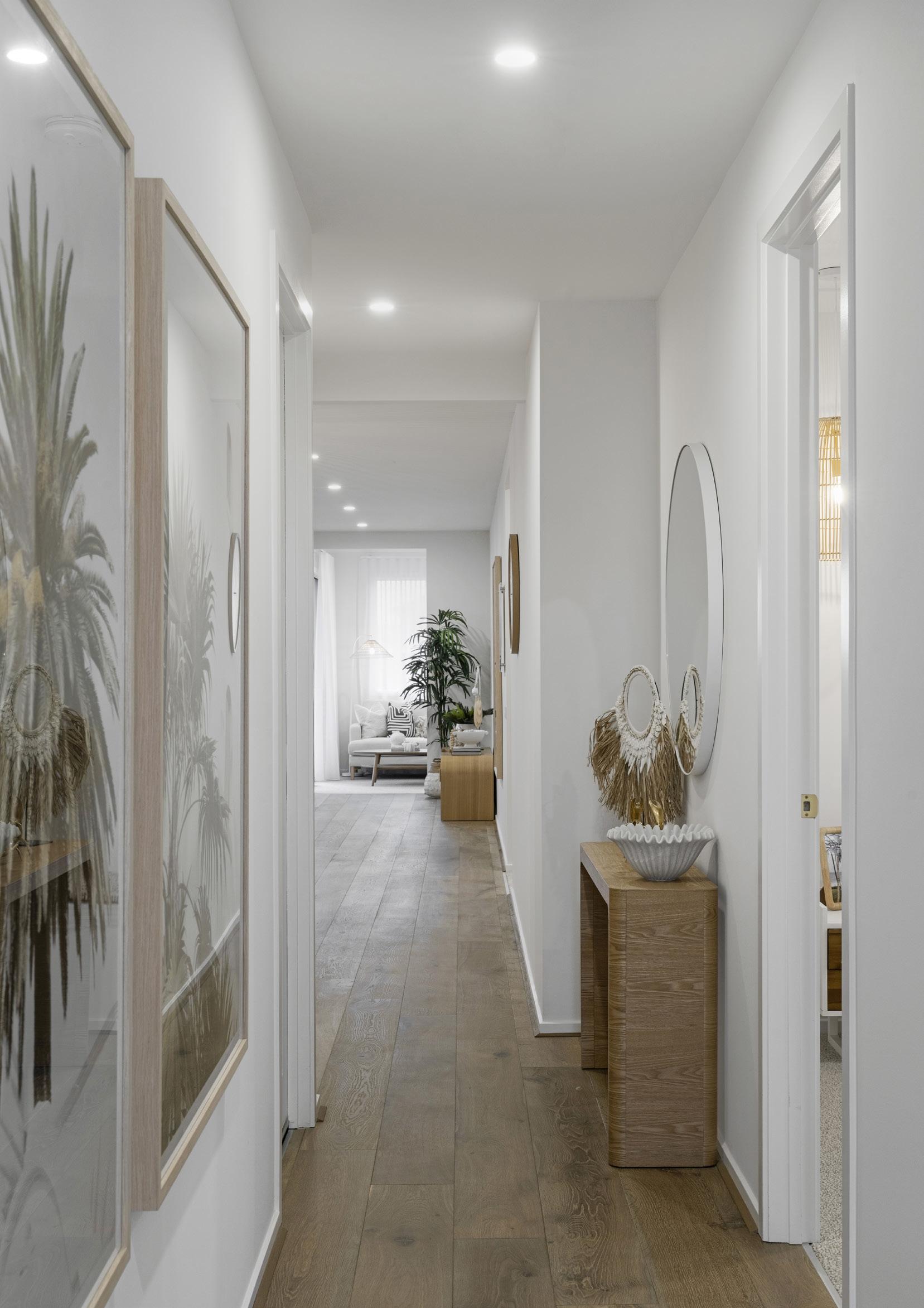
Orbit Homes are committed so far as practicable to providing and maintaining a working environment that is safe and without risks to health for its employees, contractors and visitors. Our goal is to attain Health & Safety standards equal to or where possible greater than those required by Legislations. This induction must be completed by all trades and suppliers entering Orbit Homes construction sites and buildings to promote safe working practices and as a guide to the creation of a safe, healthy working environment.
I expect each individual completing this induction and undertaking works on our sites ensure they comply with our site safety requirements, be proactive in ensuring their own health and safety and work with the Project Manager in maintaining a safe working environment.
I am fully committed to our Safety Management System and see safety as a core value, which we will not compromise. I look forward to your cooperation and participation.
Craig Millson Managing Director

Orbit Homes takes no responsibility for any persons acting outside of the OH&S requirements that are contained within this induction. By the completion of this induction you agree to all of its requirements in relation to all National or State OH&S Acts and Regulations.
This induction is intended to assist in meeting the joint OH&S responsibilities of Orbit Homes and the people engaged to undertake the required works i.e. Contractors/Suppliers and their employees, contractors or agents.
Any site-specific hazards identified by Orbit Homes which are not covered within this induction will be circulated to the Contractor/Supplier prior to that Contractor/Supplier works
commencing to ensure adequate control measures are in place (Eg. Safe Work Method Statement). This information shall be circulated by way of purchase order, email, phone, site meeting, or a combination.
Alternatively, if there are any site-specific hazards identified by the Contractor/Supplier you are to report the hazard to Orbit Homes so the proper corrective actions can be taken. If the hazard is of a serious nature that could significantly affect any site personnel whatsoever, we encourage those persons to cease works immediately, cordon off the area (if safe to do so) and alert Orbit Homes immediately so the situation can be rectified.
Where a subcontract is let by one contracting party to another, any subsequent re-letting would constitute pyramid subcontracting and would contravene Orbit Homes policy.
Pyramid subcontracting works are strictly forbidden without prior agreement by Orbit Homes OH&S Management.
Prior to the commencement of site work, ALL trades must have a Construction Industry Induction Card (white card/ red card course).All main contractors in our Queensland business need a contractors trade licence. All trades undergoing work on site are to provide evidence of trade and task competency, to provide all necessary paperwork relating to hazardous substances they may be confronted with, and the correct selection, fitting and training of personal protective equipment (PPE). Where the employee is classified as not having full work experience to undertake the task, full adequate supervision is required. Apprentices are not to be left on site UNATTENDED whilst performing construction work.
• Construction Industry induction card (white card/red card)
• First aid training (recommended) and kit (compulsory)
• Safe Work Method Statement (SWMS) for high risk construction works (COMPULSORY)
• Appropriate licenses for plant and equipment to be available on request
• Appropriate (where applicable) State licenses
• Emergency contact numbers
• To ensure contractors/suppliers and their employees comply with all relevant legislation, regulations, and codes of practice/ compliance and industry standards
• Provide each employee with the appropriate information, resources and support to enable them to carry out their work
• Develop a culture that encourages all employees to participate in the safety process
• Monitor and record safety performance and improvement
• Control all aspects of operations that have an effect on Occupational Health and Safety and assign responsibility for Occupational Health and Safety to all employees

OH&S RESPONSIBILITIES
Project Manager
Construction Manager
Building Manager
Safety Manager / Advisor
Trade / Contractor / Supplier
Responsible for implementing safety on site.
To assist with control of health and safety of all housing projects.
Overall responsibility for the health and safety of all housing projects.
Responsible for implementing policies, systems and instructions.
Responsible for the health and safety of themselves, own employees and those who may be affected by their work
ARRANGEMENTS FOR CO-ORDINATING THE HEALTH & SAFETY OF THE PROJECT
Building Manager
Project Manager / Trade / Contractor / Supplier
Project Manager / Safety Manager / Advisor Trade / Contractor / Supplier
Project Manager / Trade / Contractor / Supplier
Project Manager / Trade / Contractor / Supplier
Trade / Contractor Supplier
Trade / Contractor / Employees / Project Manager / Supplier
Appoint Project Manager.
Consult and provide OH&S information to those affected on site. Display appropriate signage.
Ensure the Orbit Homes Induction is completed and relevant safety documentation including safe work method statements (SWMS) for high risk work is complete and available for review. Ensure that SWMS is modified if standard controls are inappropriate
Manage trades in accordance to company site safety rules and SWMS for any high risk work. Ensure site hazards are controlled so far as reasonably practicable.
Coordinate the safe interaction between workers on site. Ensure workers are acting safe and responsibly to each other on site.
Ensure First Aid kits are available.
Ensure all affected workers on site are aware of information in the plan and act accordingly.
ARRANGEMENTS FOR MANAGING HEALTH & SAFETY INCIDENTS OR NEAR MISSES
Project Manager
Site Emergency Safety Sign.
Trade / Contractor / Project Manager Report incident to Orbit Homes personnel.
Trade / Contractor / Safety Manager
Project Manager / Advisor Report incident to Project Manager/Supervisor. Complete incident investigation and file report.
Project Manager / Construction
Project Manager to notify OH&S managers Manager/ OH&S Management Only OH&S Management or authorised personnel to notify Worksafe if required.
Hazard: The potential for an activity to cause harm/injury.
Risk: The likelihood of this occurring.
Work through the following list to determine control measures:
1. Eliminate the unsafe work practice, plant or equipment
2. Substitute the work practice, plant or equipment with a safer alternative
3. Isolate the work practice, plant or equipment; or
4. Re-design the workplace, plant or equipment to make it safer
5. Change Work Methods change the way the work is done to make it safer
6. Provide Protective Equipment give workers appropriate safety equipment or clothing When working on a residential construction site you must identify any potential hazards of the proposed work, assess the risks involved and develop controls to eliminate, or minimise the risk. The risk management process will be carried out in consultation with your employees.
You must not commence construction work unless:
• All employees working on Orbit Homes sites have undertaken and completed the full Orbit Homes online induction.
• Conduct a site specific risk assessment before undertaking work on site. If site conditions change or if the scope of work changes then the pre start assessment must be also be revised.
You must maintain a SWMS for any high risk works undertaken on the project and advise Orbit Homes with any changes made to the safe work method statement if required.
• Pre start assessment/JSA must be completed PRIOR to works commencing,
• Must remain on site for the duration of the work,
• Must be updated when site conditions change including if multiple trades arrive that weren't on site the day before,
• We have laminated versions to use a white board marker to fill out as well as it is sent out on the purchase order

If you are doing any of the following tasks then a Safe Work Method Statement is required:
• Where there is a risk of a person falling more than 2 meters
• Involving demolition
• Removal or disturbance of asbestos
• Structural alteration that require temporary support
• Trench or shaft if excavated depth is greater than 1.5 meters
• Near mains pressure gas
• On or near energised electrical installations or services
• Adjacent to road ways or railway
• Movement of mobile plant
• Extremes of temperature
These are examples of high risk work which would require a safe work method statement. High risk works vary and are not limited to the above list. Ask the Orbit Homes project manager or safety manager for advice.
Any contractor/supplier working on an Orbit Homes site who is conducting High Risk Construction Work MUST have a SWMS readily available on site. Only works/ tasks that are deemed as HRCW should be in the SWMS. Generic SWMS can be used on site providing you identify the SWMS in the pre start assessment and no site specific changes are required.
A Safe Work Method Statement:
• Identifies work that is high risk construction work being done
• States the hazard arising from that work
• Describes how the risk will be controlled
• Describes the manner in which the risk control measures are to be implemented
• Must be site specific ( can be generic but must be reviewed for each site)
• Must be reviewed and signed by all employees who are undertaking the task
• Copy required for inspection at all times SWMS is a legal requirement of OH&S law for all high risk works.

• All trades are to clean up their own rubbish on a daily basis.
• All windblown rubbish is to be immediately placed into the site rubbish bin/cage and ensure lids are closed.
• No rubbish or building materials are to be stored/placed outside of the perimeter temporary fencing.
• Stockpiled items (eg. bricks, roof tiles, plaster) to be placed neatly away from access areas.
• Site to be left “Trade Ready” for the next contractors or payment may be delayed.
• Need to maintain clear access to the front gate, doors, garage, toilet and water tap.
• Only Orbit Homes authorised /inducted personnel and delivery drivers are allowed to access site unsupervised.
• Failure to comply with site housekeeping requirements will result in cleaning recharges to help maintain compliance.
• Orbit Homes has a ZERO tolerance on contractors/suppliers who leave any form of building materials or building waste outside of our site.


Perimeter temporary fencing is a vital requirement when it comes to site protection, It ensure the public are not exposed to the works been conducted on site as well as providing a safe workspace for all workers on site. Some important rules when it comes to temporary fencing are;
• Do not tamper with temporary fencing
• Gates and fence panels to be closed when leaving site
• Gates to be opened inwards(not over footpaths)
• Failure to comply with fencing requirements will result in recharges to help maintain compliance
• Maintain silt protection barrier when applicable
• Notify the project manager of any damage to the fencing
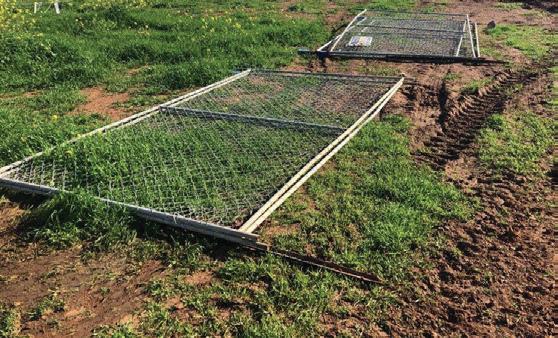
Orbit Homes provides a portable toilet on every site for our contractors/ suppliers to use. We ensure they are setup correctly, are predominantly at the front of site and we have them hygienically cleaned regularly. Some important reminders about the site amenities are as follow
• Toilets are there for your use-please do not tamper or abuse
• Toilet are supplied in working order
• Set up on level ground
• Must not be used to store building materials
• Keep the area in front of the toilet clear
All site signage that is displayed should be carefully read and understood as it may be displaying specific advice relating to site conditions. Never cover, remove or wilfully damage signs that are displayed on site, as they are positioned for a safety reason. Contact your project manager if the sign requires attention. Sign to be displayed on temporary fence facing the front of the street.
• Have a door that is hand lockable
• Please let the site supervisor immediately know of any issues
• Make every effort to flush toilet after use
• Always use the toilet for its intended purpose and not other locations on site.

It is everyone’s responsibility to ensure that members of the public are protected from the activities that occur on our building sites. You must adhere to the below requirements;
• Appropriate warning signage to be displayed
• Remove all objects, materials and debris in public areas
• Cover trenches, pier holes and uneven surfaces adequately
• Don’t block footpaths with cars, trailers, other equipment or materials
• Barricade all work areas adjacent to footpaths or roads
• Daily housekeeping to be maintained which includes sweeping footpaths and roadways of any debris from our works
• Do not leave material or debris on neighbouring properties including waffle pod tie downs, steel, timber and other building materials/waste etc.
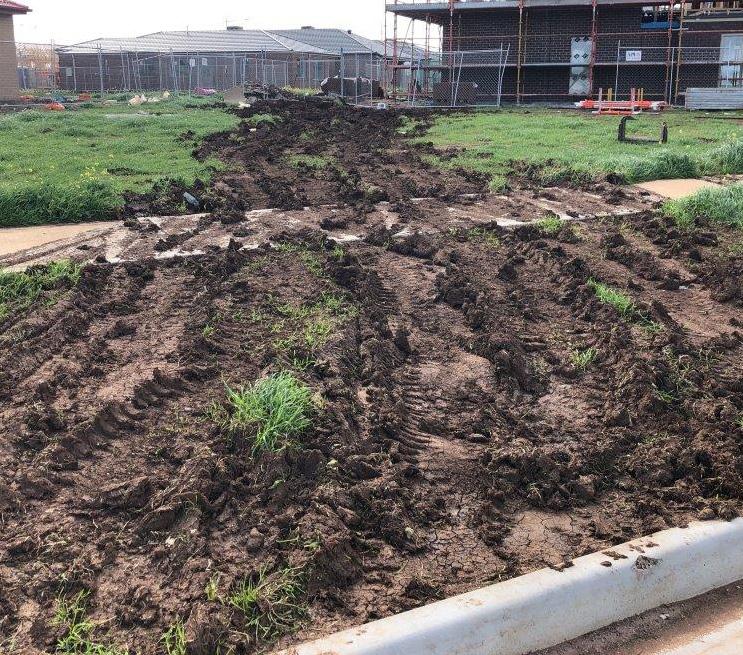
ALWAYS
• Test and tag all electrical leads, tools and equipment every three months
• Only use electrical equipment that comply to AS/NZS 3820
• Visually inspect all electrical leads, tools and equipment for damage before each use
• Use safety switches (RCDs) when using electrical tools and equipment
• Use a competent person to repair damaged electrical leads, tools and equipment
• Elevate electrical leads from ground with the use of lead stands, insulated hook devices
• Tag generators every month
• All forms of tools that are used on site MUST be in good condition, regularly maintained and operators trained appropriatly in the use of the tool they are using
NEVER
• Use damaged electrical leads, tools and equipment
• Use electrical leads, tools and equipment in damp or wet conditions or have electrical leads or equipment laying in water
• Place electrical leads in areas where they maybe damaged (e.g. on the ground, through doorways and over sharp edges)
• Use modified electrical tools and equipment
• Use domestic power leads and equipment that are unsuitable for industry
• Joining electrical leads beyond industry standards (piggy backing)
• Use double adaptors
• Use a tool that is damaged and not in a safe condition.
• Use a tool when you are not adequatly trained in the safe use of that tool Non-Compliant
All modular scaffolding must be installed to conform to Australian standard AS/NZS 4576:“Guidelines for Scaffolding”.
All scaffolding installed to a working height of 4 meters or above must be installed by a licensed Scaffolder, with a Handover Certificate issued and an identification label (SCAFFTAG) to be displayed on the scaffold (near the access ladder/stairs) to ensure full compliance. Any necessary modifications that are required to be made to the scaffold to enable work to be performed must be carried out by a licensed scaffolder from the supplier of the scaffold to then deem it to comply with appropriate Standards. If the scaffolding requires extensive modifications, the project manager should be advised immediately. After modifications are performed or the structural integrity of the scaffold has been compromised, the scaffold should be inspected and any concerns rectified immediately. Scaffolding must be inspected at intervals not exceeding 30 days, with issues documented and rectified. The components of the scaffolding system are all necessary to provide the scaffold with the structural integrity and safety required and should not be tampered with and left in an unsafe condition.
Full recharges (along with dismissal) will apply if guilty of wilful scaffold tampering.
• Have scaffold installed to comply with Australian Standards
• Have scaffold altered by a supplier of the scaffold
• Have scaffold installed with appropriate ladder or stair access
• Carry out regular visual inspections and document concerns
• Advise your project manager of scaffolding concerns, i.e. platform height or length incorrect for intended work
• Have appropriate mechanical aids and equipment necessary to load materials onto the scaffold
• Provide sufficient protection from falling debris to Public and Trade
• Leave scaffold “Trade Ready” for next person No loose concrete, etc.

• Remove scaffolding components to leave the scaffold unsafe, which includes handrails, toe boards, braces
• Manually throw mortar or bricks above shoulder height onto scaffolding
• Discard debris or unused materials from scaffolding with persons below
• Use scaffolding for any other purpose than that intended
• Leave scaffold with unused materials or in an untidy condition
• Tamper with scaffold
• Overload the scaffold with materials
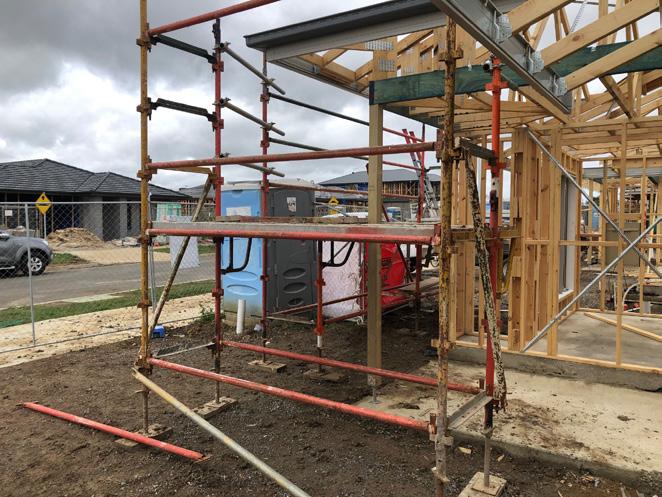
If an incident occurs on site that injures a person, provide immediate first aid treatment (IF SAFE TO DO SO), and then refer the injured worker for treatment at the local medical practitioner or hospital. All injuries sustained on site that require at minimum medical treatment MUST be reported to your project manager immediately.
All contractors on site MUST have a fully maintained first aid kit on site applicable to the work been carried out on site. Preferably there is a person who is first ais trained from your company.
Physical fall protection is installed to control the fall hazard where roof and floor construction work is performed. The fall protection is installed by an accredited installation company to conform to appropriate Industry Standards
• All heights above 2 meters must have fall protection in accordance with Codes of Practice/Compliance
• Do not tamper or alter any fall protection system in place
• Let project manager know of alterations required and wait for instruction
• Utilise installed access points only i.e. Gates
• No works or inspections are to be undertaken without fall protection and a safe work method statement in place.
Void platforms are installed to cover openings such as stair voids, veranda porticoes and swimming pool cavities. They are an integral control measure for fall hazards. They are installed to comply with Australian Standard AS/ NZS1576.1: “Scaffolding - General requirements”. The installation of the platform consists of an access opening to allow safe access via an industrial grade ladder, the opening access hatch must be kept closed at all times unless being accessed. The void platform once installed MUST not be altered in any way. The protection platforms MUST at all time be kept in a safe workable condition. If for construction reasons the platform requires modification, contact your project manager for advice.
NOTE: Any trade that is guilty of tampering with void protection systems or working around an open void will receive an official written warning and rectification recharge as a minimum at Orbit Homes discretion and under no circumstances are works to be performed without void platform.
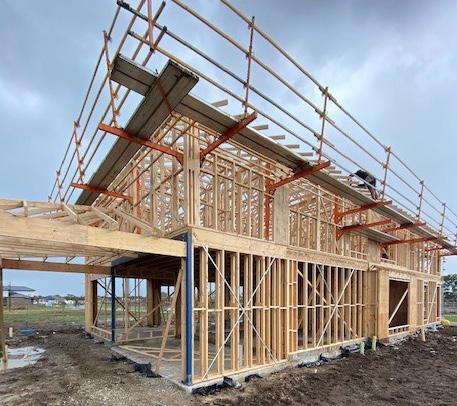

• Contractors must complete pre-start safety checks on their mobile plant and equipment daily before use
• All faults and defects must be rectified prior to use
• All equipment must be in good working order
• All persons must be competent and licensed operators as required by local/state authorities
• Be aware, stay alert and heed all safety warning signs, they are there for your protection
• Wear the appropriate personal protective equipment when working with equipment
• Operators must secure plant and equipment whenever left unattended
• Employees must consult with others in close proximity to work areas; if there are issues please contact your project manager
• Safe work method statements must include safety requirements to protect the public, on site employees and no go zone requirements- this may include witches hats, barricades or signage
• All registered plant must have service log books available as well as applicable service history for cranes and concrete pumps
NO GO ZONES are designated areas that apply to work near OVERHEAD or UNDERGROUND ASSETS. The term “NO GO ZONE” is utilized in order to provide a definition for safety clearances surrounding both overhead and underground services.
OVERHEAD SERVICES
If you are working with plant near an overhead service, you are required to conform to specific work practices.
• Between 0mm to 3000mm including an aerial line into another house a permit from the asset owner is required. This will set out specific requirements that you need to follow
• Between 3000 mm to 6400mm from an overhead electrical cable on a pole a spotter is required and 8000 mm if the electricity cable is on a tower line
• A safe work method statement must also be developed and followed by all employees.
• Any permits or “advice” from the power regulator will be obtained by Orbit Homes, NO works are to proceed if there is no permit or “advice” form on site.
If you are working on or installing scaffolding the following requirements apply. A permit to work in the NO GO ZONE if the scaffolding is:
• Under 5000mm from top rail to power lines
• Under 4600mm from the side of the scaffold to power lines
• A safe work method statement must also be developed and followed by all employees.
If the design envelope of the plant is able to encroach on this clearance in its working position you MUST adhere to the permit conditions, if no permit is in place then work can not proceed.
Anywhere above powerline and within 3m each side or below 3m 3m 3m
Spotter required at 3.6m to 4m
Beyond 6.4m - open area
Prior to the commencement of works, you must determine if your work practices are to interfere with underground assets. If so, underground assets are required to be identified and you are to determine if this work will encroach the NO GO ZONE clearances surrounding these services. If you are working with plant near an underground service and following the NO GO ZONE guidance material you may work no closer to the asset than:
• 300 mm for individuals and 500 mm for plant and equipment, or
• 3000 mm in the case of any assets registered under the pipeline act, or
• Any electrical cable with an in-service voltage greater than 66kv
• For principle assets requiring significant integrity of the material surrounding the asset, greater clearance may be requiredinformation regarding these clearances can be obtained with the initial asset location enquiry.
In an emergency, the first response should be the care and wellbeing of the injured person as well as your own safety. The Orbit Homes signage will have directions on what to do in an emergency.
We suggest that you enter the local emergency medical numbers and the number of your project manager into your mobile phone. In an emergency remain calm and if calling the Emergency Services (000) be prepared to give them the following information:
• Exact address of the accident
• The telephone number you are calling from
• The number of injured people
• Is the injured person conscious?
• Is the injured person breathing?
• The type and extent of injuries
• State if other emergency services are required
• Answer any further questions.
• Stay at the scene until given permission by the Emergency Services to leave- do not disturb any evidence unless it is to minimize harm or deal with the emergency itself.
• Do not alter incident area.
Once practical to do so you need to notify either your project manager or the OHS manager about the incident. Orbit Homes will depending on the incident carry out an investigation in the aim of looking at ways that we can avoid the accident from happening again. Orbit Homes looks at a “no blame” investigation process to ensure we can re educate all involved.
If an injury or serious incident (e.g. falling brick wall or pit collapse and near misses) does occur onsite you must notify an Orbit Homes employee.
You should also ensure that the incident scene following a serious injury or dangerous incident is not disturbed until advised otherwise or by Worksafe or a representative of Orbit Homes – this does not apply if the disturbance is as a result of attending to an injured person. Severe penalties apply if they fail to report incidents to the government authorities and/or disturb an incident scene following a ‘reportable’ incident.
If you are an employer of another person working on site, then you may also have responsibilities under the OH&S (Incident Notification) Regulations to report serious injuries and dangerous occurrences to Worksafe. In some cases both the principal contractor and the employer of the injured person may be required to report. First seek advice from your or OH&S Manager without fail.
If any of the below serious incidents/injuries occur on site you must notify either the project manager and or the OHS manager when practical to do so;
• On the death (including if the worker was on site but passes away later) or serious injury of any person
• Immediate treatment as an in-patient in a hospital
• Immediate treatment with a registered medical practitioner for the following types of injuries
• The amputation of any part of his or her body
• A serious head injury
• A serious eye injury
• The separation of his or her skin from underlying tissue (such as degloving or scalping)
• An electric shock
• A spinal injury
• The loss of a bodily function
• Serious lacerations

The trade contractor or subcontractor must notify the principal contractor (Orbit Homes) of the following dangerous occurrences if they expose a person in the immediate vicinity to an immediate health or safety risk.
• The collapse or failure of an excavation or any shoring supporting an excavation
• The collapse or partial collapse of any part of a building or structure
• An electric shock
• An implosion, explosion or fire.
Use safety and other protective equipment when and wherever required and maintain it in good working order. Each individual Contractor, Trade and their employees are responsible for the provision of Personal Protective Equipment (PPE). Any faults or defects of any equipment should be reported immediately.
Safety equipment including gloves, safety goggles, earmuffs, steel cap boots, high visibility vests are an important items to be used when the situation arises that the control measures are not able to eliminate or substitute the hazard.
As a majority of construction work is outdoors in the “elements” contractors should have systems in place to deal with all types of weather you will encounter.
When out in the sun:
• Ensure that your UV protection is maintained when the sun is the strongest
• Cover as much of your exposed body as possible- exposed bare backs are unacceptable
• Wear a hat preferably with a wide brim that covers your neck
• Apply SPF 30+ sunscreen and reapply every two hours
• Ensure workers are provided with extra breaks away form the heat
• Monitor worker health and ensure appropriate
Silica dust can be harmful when it’s inhaled into your lungs Exposure can lead to serious diseases including:
• Silicosis - irreversible stiffening of the lungs,
• Lung cancer,
• Chronic obstructive pulmonary disease,
• Kidney disease.
Orbit Homes require that all cutting on site of crystalline silica containing materials must be robustly and adequately controlled to prevent exposure to hazardous silica dust. A SWMS and appropriate licencing must be in place.
Recognised control measures and safe systems of work include;
• The use of wet dust suppression techniques,
• Local vacuum dust extraction,
• The wearing of suitable PPE.
• Where the contractor is observed as having inadequate safety arrangements in place when working with stone products, the Orbit Homes Project Manager will issue an instruction for you to stop work immediately.
• It is a mandatory Orbit Homes requirement that a formal non-compliance notice is then issued to you the contractor to record the issue and notify Orbit Homes’s management of this.
• No further works are permitted to take place until the contractor has implemented suitable controls.
• Where contractors and their workers are found to be wilfully operating in a dangerous manner including exposing themselves and/or others to the inhalation of silica dust, strong action will be taken which may result in the immediate removal from site and/or termination of their employer’s work contract with Orbit Homes.
• Under no circumstances should stone benchtops be altered or removed from site unles OHS manager has been notified and correct procedures are put in place.
WHAT IS ASBESTOS?
Asbestos is the name given to a group of fibrous silicate minerals that can potentially cause disease to the lungs if inhaled.
WHAT MATERIALS CONTAIN ASBESTOS?
• Flat or corrugated sheeting (commonly called “AC sheeting”),
• Corrugated sheeting (commonly called “super six sheeting”),
• Water or flue pipes,
• Roof shingles,
• Flexible building boards,
• Imitation brick cladding
Stop works and contact your project manager or the Orbit Homes OHS Team, brief any workers on site of the suspected find and cordon off the area containing the material.
Orbit Homes will notify the owner to advise they need to engage a licenced hygienist or Orbit Homes will engage one on their behalf.
A licenced hygienist will then be contacted to inspect and remove any suspect material.
An Asbestos Clearance Certificate needs to be obtained from the hygienist which will confirm that the site is safe to proceed with no more suspect material on site.
Smoking or the use of e cigerettes (vaping) is not permitted on any site at anytime. If you need to smoke or vape you need to leave site and ensure you remain 4 meters from members of the public and other. If your interested in quiting smoking please visit www.quit.org.au
Manual handling covers a wide range of activities including lifting, pushing, pulling, holding, carrying. It often involves tasks that may be carried out that are not suitable to execute in a manual capacity. There are many situations that direct manual handling can be either eliminated or drastically reduced by alternate methods or by employing mechanical equipment. If the load is too heavy or unsafe to manually lift, then seek instruction from your project manager or supervisor.
Following are some CORRECT LIFTING TECHNIQUES:
• Use mechanical equipment where necessary
• Plan the lift by estimating the load and knowing exactly where it is going to be placed
• Ensure that access to the area is clear
• Avoid lifting excessively heavy loads
• Bend your knees and keep your back straight
• Hold the load as close to your body as possible
• Avoid twisting while lifting or carrying
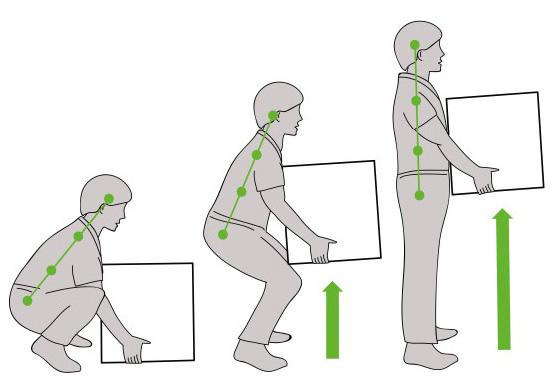
All ladders must conform to the Australian Standards and be of industrial grade quality. When in using extension ladders they must be secured and protrude 900mm above the stepping off point as well as set up securely with a 1-4 ratio.
No tasks are to be undertaken while working off a ladder unless 3 points of contact can be maintained. Safety Platform Ladders will provide a safer means of access other than using a frame ladder.
All council by-laws will be adhered to during weekdays and weekends. In the event works outside of normal working hours are required, approval must be obtained from the project manager. When working outside standard working hours the following will be adhered to:
• Your project manager must be notified prior to commencement of any works on sites. Incl. type of work and duration
• In the event of an incident please ensure an adequate first aid kit and contact details are on site
• A minimum of two persons on site at all times unless there is a lone worker safe system in place
• When working outside normal hours mobile communication must be available at all times
• A text message or a phone call must be made to the Orbit Homes Project Manager upon arrival and departure if outside standard site working hours
The general environmental duty applies to residential construction, demolition and renovating activities. This means you must understand and proactively manage the risks of harm from noise to yourself, other people or the environment.
Some of the reasonable steps to take to reduce noise from residential construction noise include:
• Restricting work and vehicle movements to normal working hours
• Scheduling noisy activities to less sensitive times
• Advising neighbours of noisy activities
• Trying to avoid using noisy tools in close proximity to existing homes
• Using the lowest noise equipment or technique to do the job
• Site and car radios – keep radios close to workers, and at a lower volume
Under the Environment Protection Act 2017, you must not emit unreasonable noise from residential construction sites, at any time of day. Construction noise can be unreasonable if it goes on for too long or is excessive under the circumstances.
Work-related gendered violence is a serious occupational health and safety issue. It is any behaviour, directed at any person, or that affects a person, because of their sex, gender or sexual orientation, or because they do not adhere to socially prescribed gender roles, that creates a risk to health and safety.
Types of work-related gendered violence can range in severity from comments and gestures, through to sexual assault and rape. It can include:
• Stalking, intimidation or threats
• Verbal abuse
• Ostracism or exclusion
• Sexually explicit gestures
• Offensive language and imagery
• Put downs, innuendo, and insinuations
• Being undermined in your role or position
• Sexual harassment
• Sexual assault or rape
Orbit Homes does not condone any form of bullying and or harassment on our sites. We will take all reports seriously and will investigate and escalate to the police if required. Any person found guilty will be banned from working on any Orbit Homes site.
Mental health is a state of wellbeing that allows people to realise their potential while coping with the ordinary challenges of life.
We all experience varying levels of mental health during our lives.
Good mental health supports people to thrive in their life, work and relationships with others. Meanwhile, mental ill-health can negatively impact these parts of our lives in a significant way.
Everyone is capable and well placed to create a positive, supportive and inclusive workplace and to develop good systems of work for supporting mental health in the workplace.
The following are additional safety rules that must be complied with at all times on site:
• Non-prescribed drugs and alcohol are strictly prohibited on site. No person is permitted to go onto or to work on a site under the influence of drugs or alcohol
• Bullying, sexual harassment, racial insults or other similar behavior will not be tolerated from any person to any other person at any time
• Horseplay or pranks must not be engaged in
• Children under the age of 15 and/or who are not employed or legally involved in building activities are not permitted on site at any time
• Pets or animals are not permitted on site at any time
• Noise pollution from HIGH volume radios - keep the volume reasonable for all
• Vulgar language will not be tolerated on site, please be mindful of neighbor’s and other person who may be passing by site
• Safety instructions to be obeyed at all times
Without limiting or affecting the Contractor’s obligations pursuant to legislation, the Contractor must:
(a) comply with the Occupational Health and Safety Act 2004 (VIC) and Work Health and Safety Act 2011 (Cth.)
(b) take reasonable care for the health and safety of all:
(i) employees of the Company;
(ii) other persons engaged to work at the sites or premises at which the Service or Goods are to be provided;
(iii) all other persons who could be affected by the conduct of the Contractor.
(c) fully co-operate with the Company in any action or requirement (including site safety rules) which the Company considers necessary to maintain a working environment which is safe and without risk to health, or to ensure the safety and welfare of those present in the working environment; and
(d) before providing any Goods or Services under this Agreement, complete any occupational health and safety induction or training processes as directed by the Company and provide the following information:
(i) certificate of incorporation (if applicable);
(ii) copies of any insurance policies required under clause 12 of this Agreement;
(iii) valid ABN;
(iv) certificate of GST registration (if registered for GST); and any other information reasonably requested by the Company, including any information concerning the Contractor’s occupational health and safety compliance.